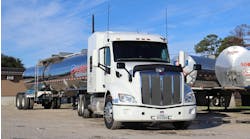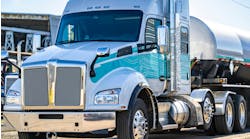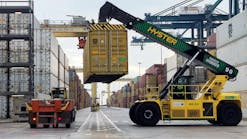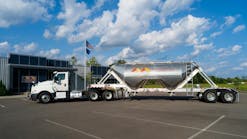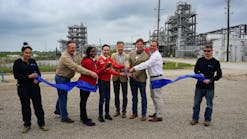Bob Costello, American Trucking Associations’ chief economist, acknowledged during National Tank Truck Carriers’ 2022 Annual Conference that slowing population growth and soaring inflation are impacting his long-term forecast, and there’s a “rising probability” of a recession in the second half of 2023. But he was more optimistic about the near-term outlook for tank truck carriers, citing increased domestic production of key commodities and a post-pandemic rise in contracted truckload freight.
“For this group, there are some good things on the horizon,” he said.
Census Bureau and ATA data show single-family housing starts at a high level after years of underbuilding. And, combined with increased government spending spurred by the Infrastructure Investment and Jobs Act, tank truck carriers should have plenty of construction-related freight to haul, Costello said.
In addition, factory output continues to grow this year, thought at a slower pace than in 2021, according to Federal Reserve and ATA data. Leading the way is chemical production, which was down 2.6% year-over-year in 2020, but increased 5.2% last year (with IHS Markit data included). Costello anticipated a 3.8% increase this year, and 2.6% growth in 2023, leading to the highest production level since 2016.
See also: NTTC members flock to San Diego for golden gathering
Costello also pointed to gains in production of plastics; paint; cement; clay, lime, and gypsum; and food as positive developments for the industry. “Some of you are going to have pretty good years,” he predicted. “Is there more risk today than there was six to 12 months ago in the economy? Sure. I can’t deny that. Absolutely. But the baseline forecast is for overall continued growth, albeit slower. And more specifically for (tank truck carriers), if you look across the spectrum of freight, you’re in some of the best areas.”
Another positive, Costello said, is rapid growth in tank truck contract loads—aided by a slowing spot market—which enjoyed 6.9% year-over-year gains through April, compared to only 1.1% in total for-hire truckload contract freight, according to ATA’s Trucking Activity Report. Average tank truck revenue per mile was up 21% y/y. “Yes, you got hit harder (during the pandemic), but you’re coming back faster,” he said.
Costello also teased the release of the 2022 edition of the Tank Truck Industry Market Analysis, updated with new government data. “There were some real changes in the Commodity Flow Survey from 2012 to 2017, and something that won’t surprise you much is average length of haul fell,” he said. “Not entirely across the board, but probably eight of the 10 commodities I look at for (this segment) fell over that time period. That has ramifications over how much equipment you need, and so forth.”
Preliminary data Costello shared illustrated that, while tank truck fleet tractor counts and tonnage decreased from 2018 to 2021, revenue was up—from $40.3 billion to $45.4 billion.
He also said gasoline loads accounted for 27.7% of total tank truck tonnage in 2021. Total fuel loads, including diesel and other fuel oils (21.6%), and aviation fuel (2.5%), added up to 51.8% of all tank truck loads. Sands (15.4%) and chemicals (11.2%) were the second-largest commodity groups by tonnage. But broken down by percentage of tank truck revenue, chemicals—which typically travel longer distances—brought in 28.8% of the segment’s revenue. The three fuel categories combined for 33%.
“I don’t think it’s earth-shattering results, but these forecasts … show we’ve got a good stretch of positive results in front of us,” NTTC president and CEO Ryan Streblow said.
